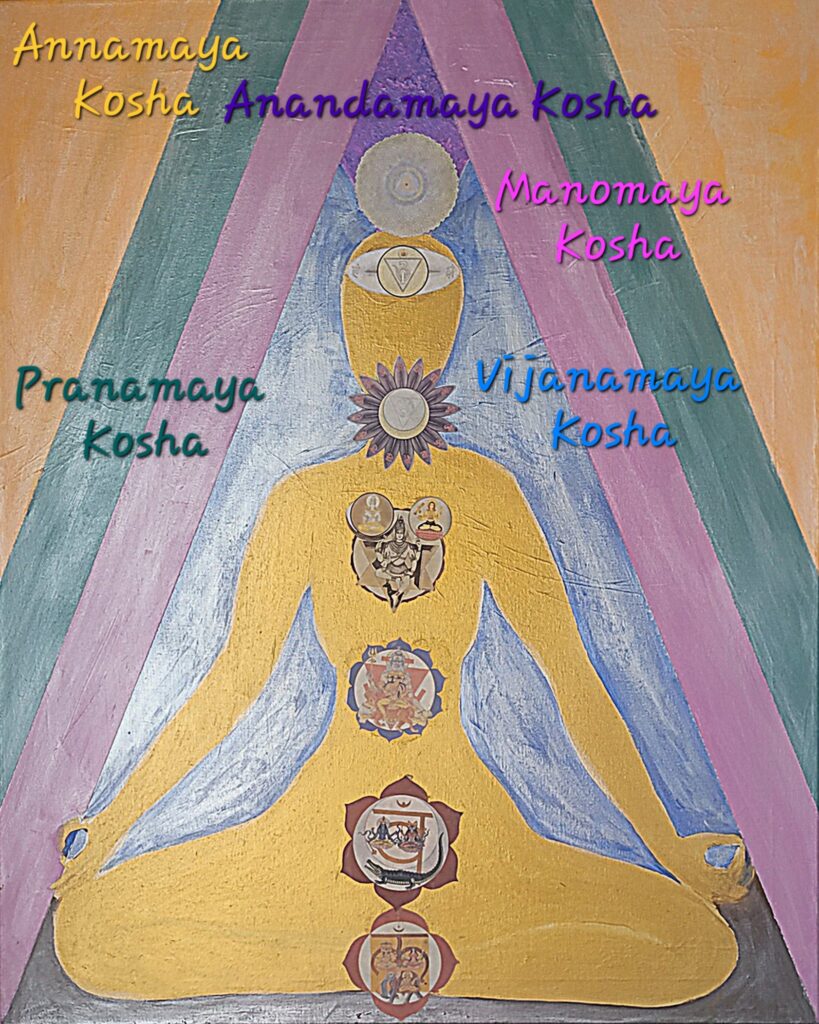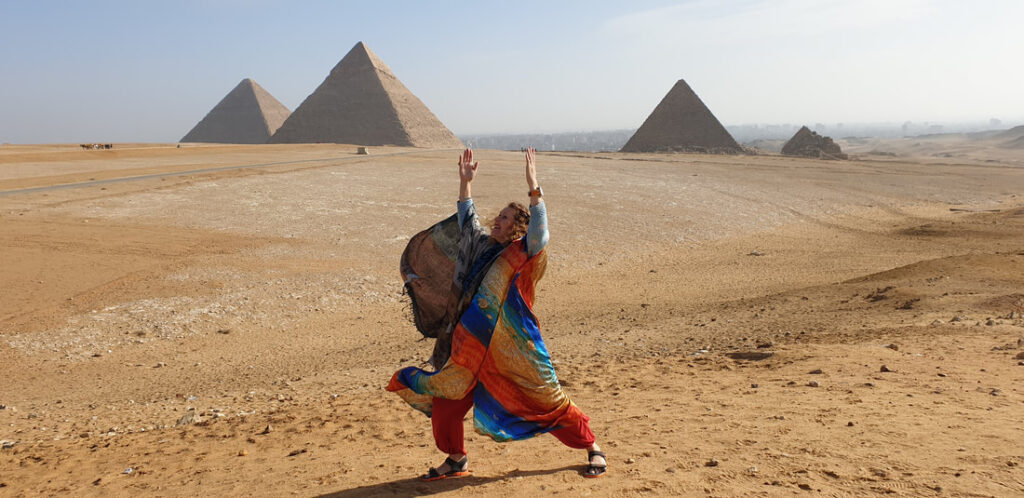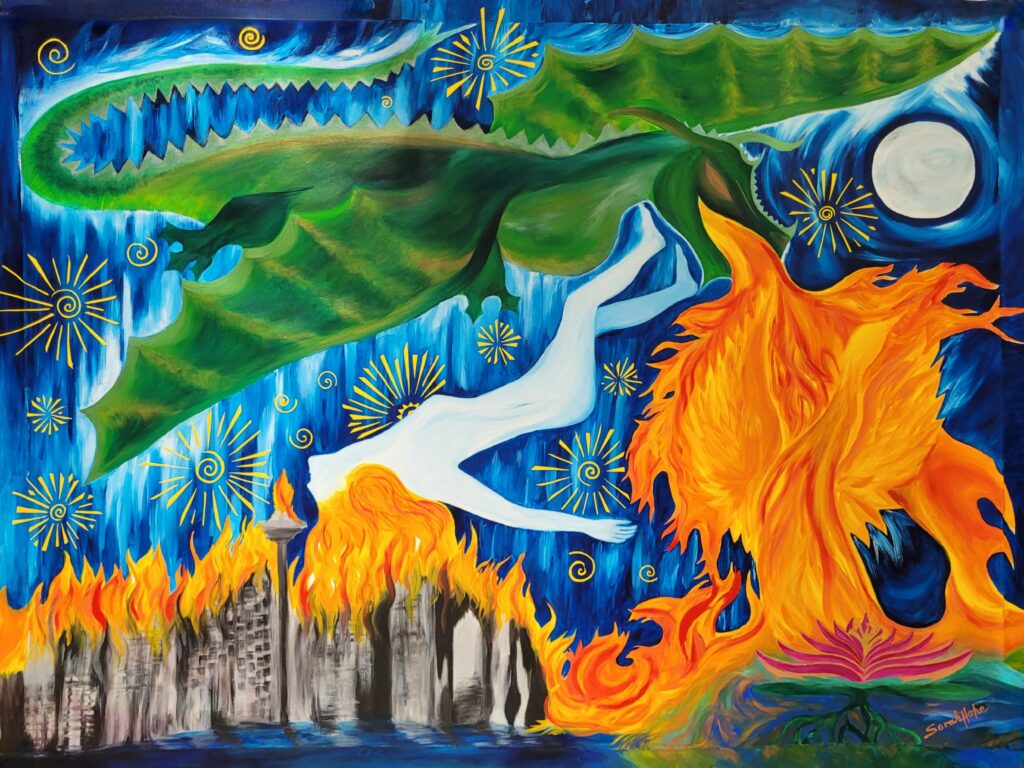The Koshas are five psychic sheaths that make up our subtle body

We have 5 sheaths or layers that make up our bodies, though they cannot be separated.
In traditional systems, the Koshas and Chakras are separate concepts, but in the modern systems, the interelationship is explored.
The universe is created from 5 elements in this order: ethereal space or ether, air, fire, water, and earth
we have 5 senses, hearing, touch, sight, taste and smell and 5 organs of sense: ears, skin, eyes, tongue and nose that correspond to the 5 elements and 5 Koshas
All phenomenon arises from a combination of the 5 elements. When phenomenon is percieved by our 5 organs of sense it is translated into sense perceptions and the immpressions are taken to our mind where they are evaluated.
akasha (ether)ears, sound
vayu (air)touch, skin,
agni (fire)eyes sight,
ap (water)tongue, taste, and
prithvi (earth), smell, nose. Annamaya kosha, The Earth element is the foundation of the body, the bones, flesh, skin and body hair. The seed sylable of the Earth Element is LAM, Prononced LANG The mantra LANG is focused in the base root chakra
1. Annamaya Kosha: The Physical Body
- 1st Chakra, 2nd chakra
- Root Chakra, Sacral chakra
- Earth element, water element
- Sense of smell, sense of taste
- Sense organ Nose, sense organ Tongue
- Bija mantra LAM, VAM
- Bija sound LANG, VANG
- Food, Water
- The outermost layer is the physical body (organs, bones, muscle tissue, and skin), known as the annamaya kosha in yoga. Anna means “food” or “physical matter” and maya means “made of.” We are the most familiar with our annamaya kosha—the experience of our physical body in yoga. Most people live in this layer of existence, mostly concerned with the survival of their body.
2. Pranamaya Kosha: The Energy Body (breath)
- 4th Chakra
- Heart Chakra
- Air element
- sense of touch
- sense organ skin
- Bija mantra YAM
- Bija sound YANG
- Breath
Sheathed by the physical layer, the energetic body is called the pranamaya kosha and is composed of the body’s subtle life-force energy prana.
The element associated with Pranamaya is air. Vayu is the term for air or wind, it is the vital life-giving force (prana). It aids the functions of the lungs and heart, circulating fresh oxygen and vital energy. Air is formless and colourless, without smell or taste.
Prana is closely related to the breath—you receive prana upon the air you breathe. Pranayama exercises, increase and regulate prana in the body.
The Pranamaya kosha is the sphere of our life energies. It is the bridge between the other sheaths, between our physical body – annamaya kosha, the 5 senses and the mind – manomaya kosha.
3. Manomaya Kosha: The Mental Body (impressions)
The third layer corresponds to your mind, emotions, and nervous system—expressed as streams of thoughts, feelings, and sensations, and is known as the manomaya kosha, from manas, which means “mind” or “thought processes.” Thought waves determine what we think and what we think decides what we do, who we are, and what we become.
All senses feed the mind to create our thought perceptions. These thought perceptions are coloured by our mind through past experiences.
Many of us have an overactive manomaya kosha that wears on our nervous system and plays out through our emotions. Yoga helps calm our minds and soothe our nervous systems, allowing you to recover from the effects of stress and fatigue on your third body. Your mental body is also where we experience the five senses.
Yoga and Pranyama help to quiet the mind, emotions and nervous system to better be able to connect with Vijnanamaya Kosha
4. Vijnanamaya Kosha: Wisdom Body (ideas)
Vijnanamay Kosha is the bridge between the mind and deeper understanding. It lies between Manomaya Kosha – the constant stream of thoughts, feelings, and sensations (the processing, thinking, and reactive mind), and Anandamaya kosha, the Bliss sheath .
It is the source of an inner knowing, higher intelligence, wisdom, intuition, conscience and deeper insights into the nature of who we are and how we relate to the world around us. Here, we develop a more profound connection to oneself and the ability to see reality with clarity.
The term Vijnana or Knowledge is used to distinguish correct knowledge.
Vidya. is made of two further layers of knowledge:-
Para Vidya: Knowledge correct reality, which is eternal and
Apara Vidya: Knowledge gained through the experience of the senses
Vihnanamaya kosha is connected to Buddhi. It collects the information provided to it from manomaya kosha and sorts it into shapes, forms and ideas. These thoughts are coloured by samskaras and so do not provide a true and clear perception of reality. It can perceive that things are separate to create an ordered world for the body to move around in, but it can also fail to perceive interconnectedness of all things.
Awareness: Vijnanamaya Kosha enhances awareness, allowing individuals to be more present and mindful of their thoughts and actions.
Detachment and Clarity: By awakening this kosha, individuals can develop detachment from the ego and a sense of self, leading to greater clarity and inner reflection.
Yoga helps quiet the mental body so that our wisdom body can be heard and begin to guide us. A simple way to start working with your wisdom body is to notice sensations and changes taking place internally throughout your practice.
5. Anandamaya kosha: Bliss Body(experiences)
The deepest layer of our being is the core of our existence, known as the anandamaya kosha, from Ananda, which means “bliss.” Often referred to as your highest self or spirit, your bliss body is where you experience the unbounded freedom, expanse, and joyousness of your true nature. There’s a sense of peace and connectedness during which time ceases to exist, and your consciousness expands beyond the limits of your body.
We can use yoga to bring the 5 koshas, body, breath, mind, wisdom, and spirit into harmony



